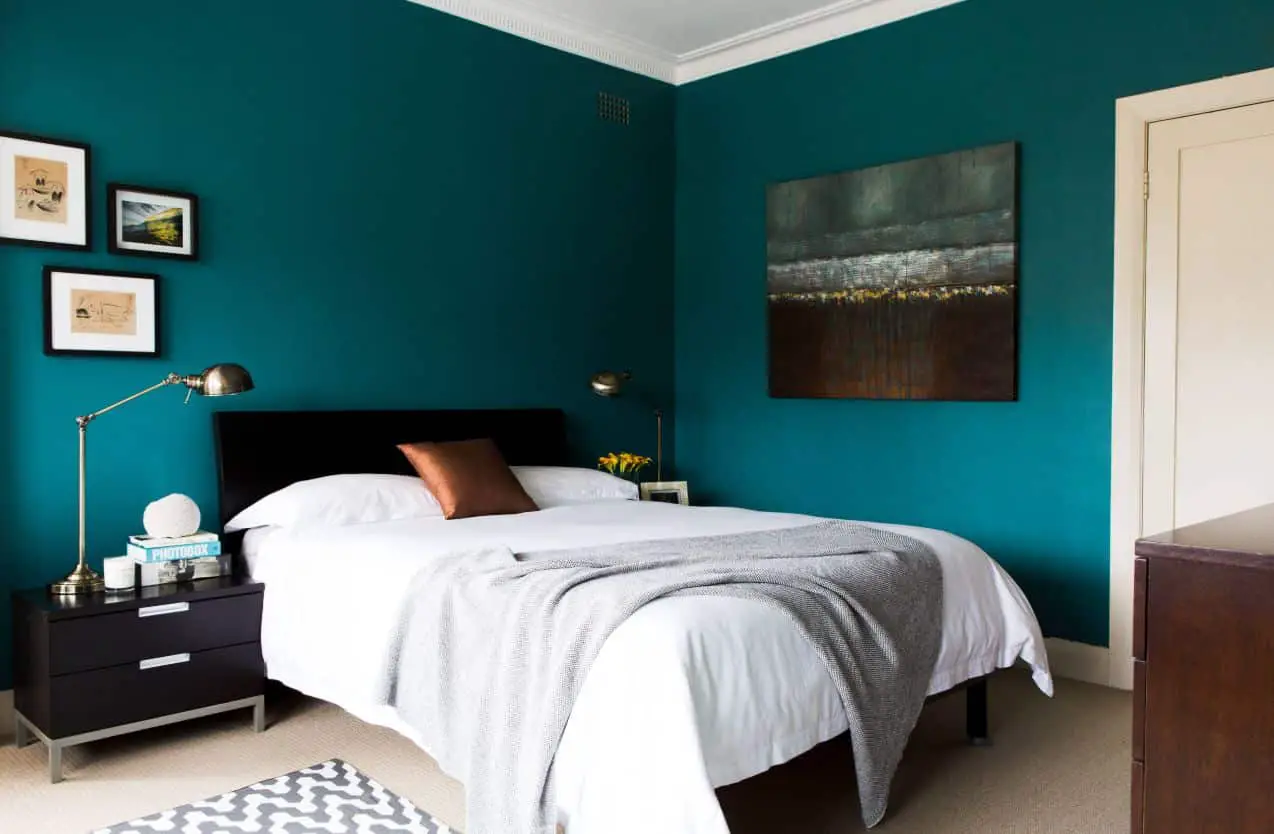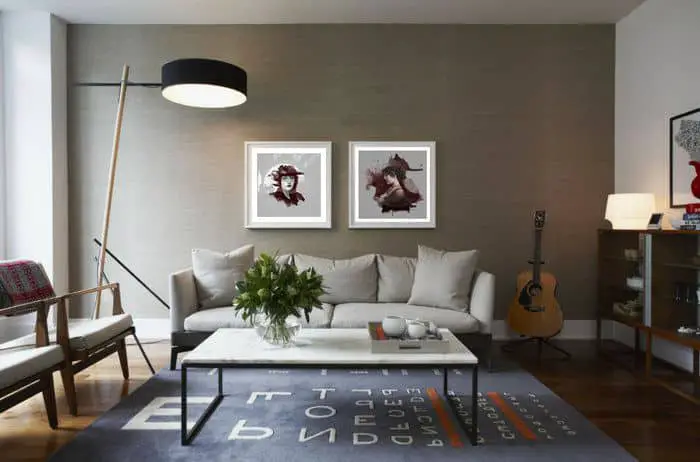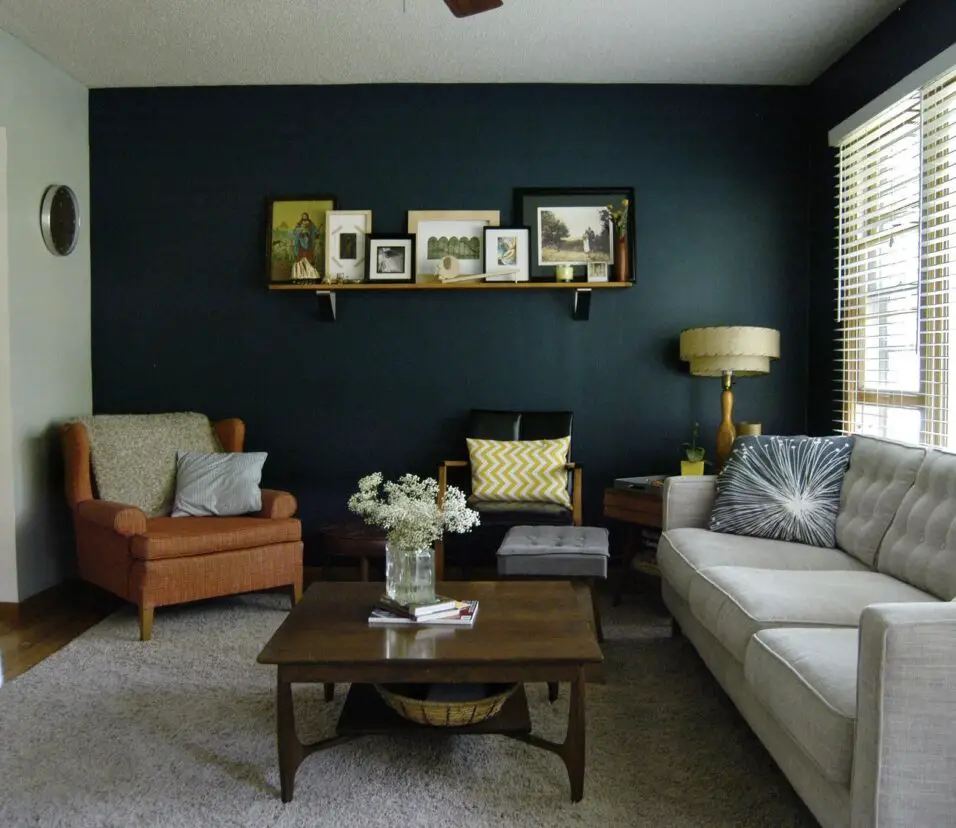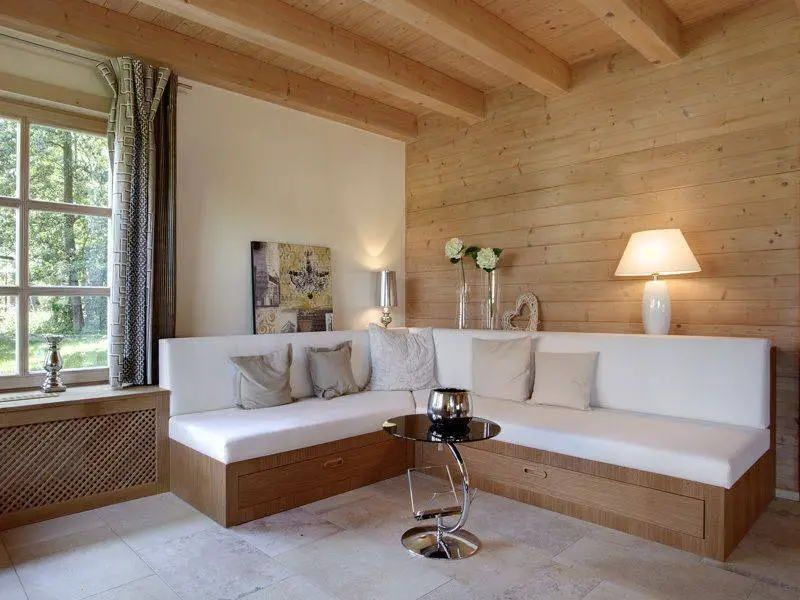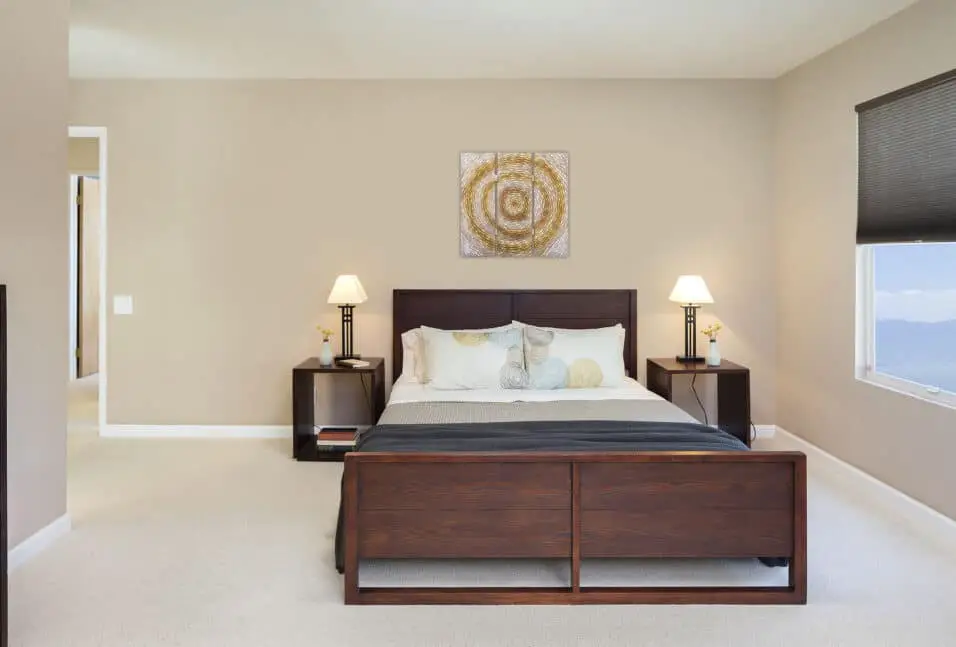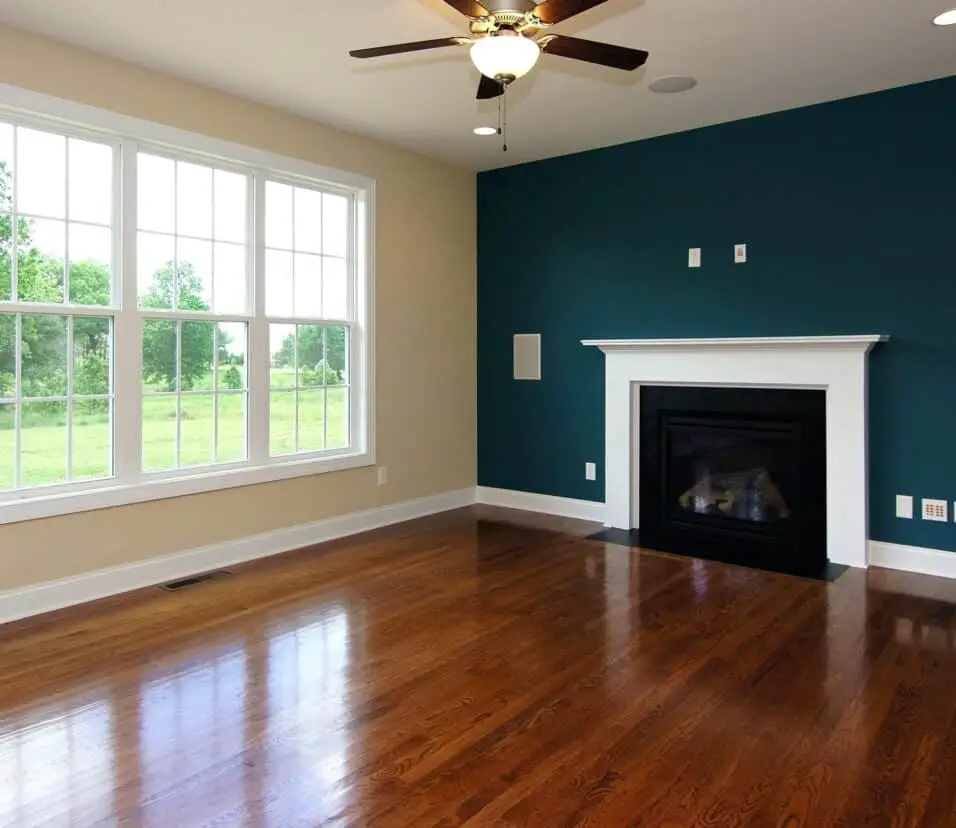How To Pick Accent Wall Color
Introduction
How To Pick Accent Wall Color: Choosing the right accent wall color can completely transform the look and feel of a room. Whether you want to create a focal point, add depth, or enhance the overall aesthetic, an accent wall can be a powerful design element. However, with so many color options available, it can be overwhelming to decide which one will work best for your space. In this article, we will guide you through the process of selecting the perfect accent wall color, taking into consideration various factors such as room size, lighting, and personal style.
An accent wall is a single wall within a room that is painted or decorated differently from the other walls. Its purpose is to draw attention and create visual interest. When done right, an accent wall can add depth, create a sense of balance, and highlight architectural features or decorative elements. It can also serve as a backdrop for artwork, furniture, or other design elements you want to showcase. Whether you want to make a bold statement or create a subtle contrast, the color you choose for your accent wall plays a crucial role in achieving the desired effect.
When selecting an accent wall color, it is essential to consider the overall color scheme of the room. Look at the existing colors of the furniture, flooring, and other elements in the space. You want to choose a color that complements and enhances the existing palette rather than clashes with it. Additionally, take into account the size of the room. Darker colors tend to make a space feel smaller, while lighter colors can create an illusion of more space. If you have a small room, opting for a lighter shade for your accent wall might be a wise choice.
Furthermore, lighting plays a significant role in how colors appear in a room. Natural light and artificial lighting can affect the way a color looks on the wall. Consider the direction and intensity of the light sources in the room when selecting your accent wall color. It is also worth noting that different colors evoke different emotions and moods. For example, warm colors like red and orange can create a cozy and inviting atmosphere, while cool colors like blue and green can promote a sense of calmness and tranquility.
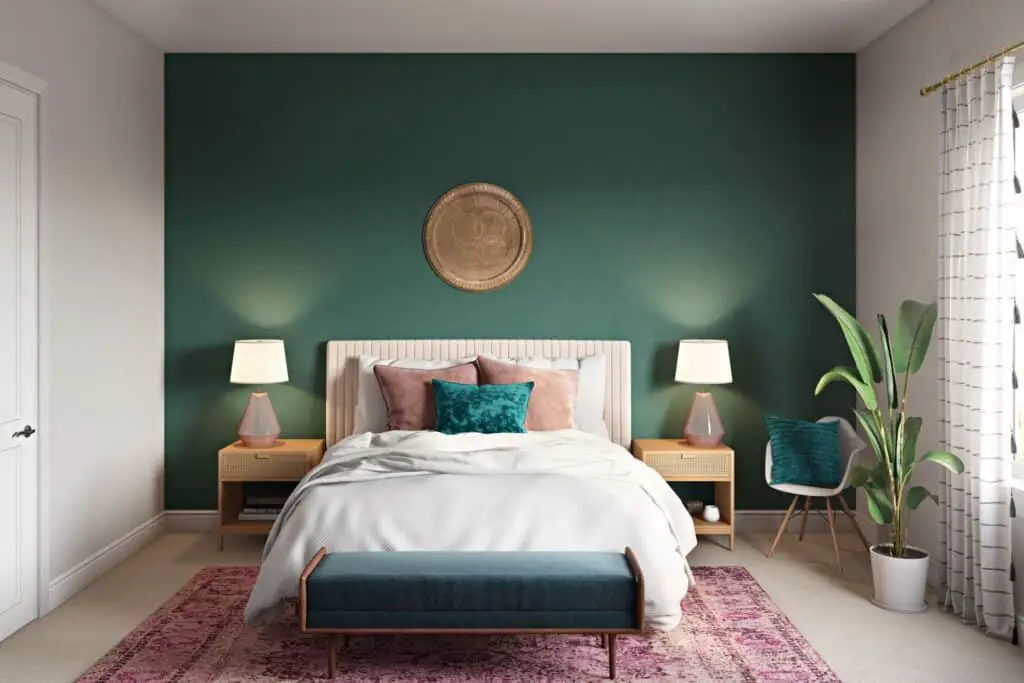
How do I choose an accent color for my wall?
The Most Important Tip for How to Pick an Accent Wall Colour
- Think About Your Existing Decor. Start by looking at your home’s existing decor and figuring out what colour palette you’d like to work with. …
- Choose A Colour Scheme.
- Accessorize with Accents.
- Test Your Colour Choice.
Choosing an accent color for your wall can be an exciting yet challenging task. The right accent color can transform the entire look and feel of a room, adding depth, personality, and visual interest. However, with so many options available, it can be overwhelming to make a decision. In this guide, we will provide you with some helpful tips and considerations to help you choose the perfect accent color for your wall.
First and foremost, it is important to consider the overall theme and style of your room. Are you going for a modern, minimalist look or a more traditional, cozy feel? The accent color you choose should complement the existing color palette and enhance the overall aesthetic of the space. For example, if your room has a neutral color scheme, you might opt for a bold, vibrant accent color to create a striking contrast.
Another factor to consider is the size and lighting of the room. Darker accent colors tend to make a room feel smaller and cozier. While lighter colors can create an illusion of space and openness. If your room is small or lacks natural light, you might want to choose a lighter accent color to brighten up the space. On the other hand, if you have a large, well-lit room, you can experiment with darker, more dramatic accent colors.
Furthermore, it is essential to take into account the mood and atmosphere you want to create in the room. Colors have the power to evoke certain emotions and feelings. For instance, warm colors like red, orange, and yellow can create a cozy and inviting atmosphere. While cool colors like blue and green can promote a sense of calm and tranquility. Consider the purpose of the room and the mood you want to set when choosing your accent color.
Additionally, it can be helpful to draw inspiration from your existing furniture, artwork, or textiles in the room. Look for colors that are already present in these elements and use them as a starting point for your accent color. This will help create a cohesive and harmonious look throughout the space. You can also consider using color theory principles, such as complementary or analogous colors, to create a visually pleasing and balanced color scheme.
Choosing an accent color for your wall requires careful consideration of various factors such as the room’s style, size, lighting, desired mood, and existing elements. By taking these factors into account and following your personal preferences. You can select an accent color that enhances the overall aesthetic of your space and creates the desired atmosphere. Remember to experiment, have fun, and trust your instincts when making your final decision.
What is the rule for accent walls?
Go with a color that is darker than the other walls in the room. A darker hue will contrast with the lighter walls and pull eyes straight to it, which is what you want. A good rule of thumb is to paint the accent wall the same color as the other walls, but 2 shades darker.
An accent wall is a popular interior design technique that involves painting or decorating one wall in a room differently from the others. This technique is used to create a focal point, add visual interest, and enhance the overall aesthetic appeal of a space. Accent walls can be created using various materials, colors, patterns, and textures, depending on the desired effect and the style of the room.
One of the main rules for accent walls is to choose the right wall to highlight. Typically, the wall that is directly opposite the entrance or the wall behind the main furniture piece, such as a bed or a sofa, is selected as the accent wall. This placement ensures that the accent wall immediately catches the attention of anyone entering the room and becomes the focal point of the space. It also helps to create a sense of balance and harmony within the room.
When it comes to selecting the color for an accent wall, there are a few guidelines to consider. The color should complement the overall color scheme of the room while also providing a contrast to the other walls. This contrast can be achieved by choosing a darker or brighter shade of the same color or by selecting a completely different color that harmonizes with the existing palette. Bold and vibrant colors are often used for accent walls to create a dramatic effect. While softer and more muted tones can be chosen for a subtle and sophisticated look.
In addition to color, patterns and textures can also be used to create an accent wall. Wallpaper, stencils, or textured paint can be applied to the chosen wall to add visual interest and depth. These elements can introduce patterns, such as stripes, geometric shapes, or floral motifs. Which can further enhance the overall design scheme of the room. It is important to ensure that the patterns and textures chosen for the accent wall complement the existing decor and do not overwhelm the space.
Overall, the rule for accent walls is to create a visually appealing focal point that enhances the overall design of a room. By carefully selecting the right wall, color, and decorative elements, an accent wall can transform a space and add a touch of personality and style. Whether it is through bold colors, intricate patterns, or textured finishes, accent walls offer endless possibilities for creativity and can truly elevate the aesthetic appeal of any room.
Should an accent wall be lighter or darker?
An accent wall should be chosen to complement the rest of the room décor and furnishings. So it can be either light or dark depending on what best suits the space. If the room is filled with light colors. A darker accent wall can provide contrast and make the room feel more dynamic.
Introduction:
An accent wall is a popular design technique used to add visual interest and depth to a room. It involves painting or wallpapering one wall in a different color or pattern than the rest of the walls. When deciding on the color for an accent wall, one common question that arises is whether it should be lighter or darker than the other walls. In this article, we will explore the factors to consider when choosing the shade for an accent wall.
Factors to Consider:
When determining whether an accent wall should be lighter or darker, several factors come into play. Firstly, the size of the room should be taken into account. In smaller rooms, a lighter accent wall can create the illusion of more space, making the room feel larger and more open. On the other hand, in larger rooms, a darker accent wall can help to create a cozy and intimate atmosphere.
Another factor to consider is the natural light in the room. If the room receives ample natural light, a darker accent wall can add depth and drama without making the space feel too dark. However, in rooms with limited natural light. A lighter accent wall can help to brighten up the space and make it feel more airy and inviting.
Additionally, the purpose of the room should be taken into consideration. For example, in a bedroom, a darker accent wall can create a sense of relaxation and tranquility. While in a living room, a lighter accent wall can make the space feel more vibrant and energetic.
Lastly, it is important to consider the existing color scheme and furniture in the room. If the room already has a lot of bold and vibrant colors, a lighter accent wall can help to balance the overall look. Conversely, if the room has a more neutral color palette, a darker accent wall can add a striking focal point.
Whether an accent wall should be lighter or darker depends on various factors such as the size of the room, the amount of natural light. The purpose of the room, and the existing color scheme. By considering these factors, you can choose the shade that best complements your space and achieves the desired effect.
How many walls should you paint as an accent color?
We recommend sticking to one accent wall per room. Picking two or three will dilute the effect; the room will feel like a collage of colours rather than a carefully designed palette.
Introduction:
When it comes to painting a room, choosing the right color scheme can make a significant impact on the overall aesthetic. One popular technique to add visual interest and create a focal point is to paint one or more walls as an accent color. This approach allows you to highlight specific architectural features or create a sense of depth and dimension in the space. However, determining the number of walls to paint as an accent color requires careful consideration of various factors. Including the room size, desired effect, and personal preference.
Factors to Consider:
Before deciding on the number of walls to paint as an accent color, it is essential to assess the size and layout of the room. In smaller spaces, painting a single wall as an accent can create a dramatic effect without overwhelming the area. This technique works particularly well in rooms with architectural features such as fireplaces or alcoves. As it draws attention to these focal points. On the other hand, larger rooms may benefit from multiple accent walls to create a cohesive and balanced look.
Another crucial factor to consider is the desired effect:
Do you want to make a bold statement or create a subtle contrast? Painting a single wall as an accent color can make a powerful impact, especially when using vibrant or contrasting hues. This approach can add a pop of color and create a focal point in an otherwise neutral room. Conversely, if you prefer a more understated look, painting two or three walls as accent colors in a complementary shade can provide a harmonious and sophisticated atmosphere.
Personal preference also plays a significant role:
Some individuals may prefer a more minimalist approach and opt for a single accent wall. While others may enjoy a more eclectic style and choose to paint multiple walls as accents. It is essential to consider your personal taste and the overall theme or style of the room. Experimenting with different options, such as painting adjacent walls or walls that face each other, can also create an interesting visual effect.
Ultimately, the decision of how many walls to paint as an accent color depends on various factors. Including room size, desired effect, and personal preference. Whether you choose to paint a single wall or multiple walls. The key is to create a balanced and visually appealing space. By carefully considering these factors and experimenting with different options. You can transform your room into a stylish and inviting environment.
What color accent wall makes a room look bigger?
Using dark and bright white colors that open up a room, in contrast, creates the illusion of a much larger area. Small rooms are not always square. Some may be narrow and long. When considering how to make a narrow room look wider with paint. Keep in mind that light and cool colors recede – they seem farther away.
Introduction:
When it comes to interior design, choosing the right color for an accent wall can have a significant impact on the overall perception of space in a room. The color of an accent wall can create an illusion of depth, making a room appear larger or smaller. Among the various color options available, there are certain colors that are known to make a room look bigger. In this article, we will explore the different color choices for an accent wall that can help create a sense of spaciousness in a room.
Light Colors:
One of the most effective ways to make a room look bigger is by using light colors for the accent wall. Light colors, such as whites, creams, and pastels, have the ability to reflect natural light and create an airy and open feel in a space. These colors have a visually expanding effect, making the walls recede and giving the illusion of a larger room. Additionally, light colors also tend to make a room feel brighter, which further enhances the perception of spaciousness.
Cool Colors:
Cool colors, such as blues and greens, are another excellent choice for an accent wall that can make a room look bigger. These colors have a calming and soothing effect, which can create a sense of tranquility and openness in a space. Cool colors also have a receding effect, making the walls appear farther away and expanding the visual boundaries of a room. By using cool colors for an accent wall, you can create a serene and spacious atmosphere that visually enlarges the room.
Neutral Colors:
Neutral colors, such as grays, beiges, and taupes, are versatile options that can make a room look bigger while providing a timeless and elegant aesthetic. These colors have a subtle and understated quality that can create a sense of harmony and balance in a space. Neutral colors work well with various design styles and can be easily paired with different furniture and decor choices. By using neutral colors for an accent wall, you can create a cohesive and visually expansive look that adds depth and dimension to the room.
The color of an accent wall plays a crucial role in creating the perception of space in a room. Light colors, cool colors, and neutral colors are all excellent choices that can make a room look bigger. By strategically selecting the right color for an accent wall, you can transform the visual dynamics of a space and create a sense of openness and spaciousness. Whether you opt for light, cool, or neutral colors. It is important to consider the overall design scheme and lighting conditions of the room to achieve the desired effect.
When choosing an accent wall color, there are several factors to consider in order to create a visually appealing and harmonious space. Firstly, it is important to take into account the existing color scheme of the room. Consider the dominant colors in the room’s decor and furniture, and choose an accent wall color that complements or contrasts with these colors. This will help create a cohesive and balanced look.
Another factor to consider is the purpose of the accent wall. Are you looking to create a focal point in the room or highlight a specific architectural feature? If so, choose a bold and contrasting color that will draw attention to that area. On the other hand, if you want to create a more subtle and cohesive look, opt for a color that is slightly different from the other walls but still within the same color family.
Lighting is also an important consideration when choosing an accent wall color. Natural and artificial lighting can greatly affect how a color appears in a room. Take into account the direction and intensity of the light sources in the room, as well as the time of day the room is most frequently used. Test the chosen accent wall color under different lighting conditions to ensure it creates the desired effect.
How can I determine which accent wall color will complement the existing room decor?
Choosing the right accent wall color that complements the existing room decor is crucial in creating a harmonious and visually appealing space. To determine the perfect color, there are several factors to consider:
Existing color scheme: Take a close look at the colors already present in the room, including furniture, curtains, rugs, and accessories. Identify the dominant colors and choose an accent wall color that complements or contrasts with these hues. For example, if the room features mostly neutral tones, a bold and vibrant accent color can add a pop of excitement. On the other hand, if the room already has a vibrant color scheme. A more subtle and complementary accent color might be a better choice.
Mood and atmosphere: Consider the mood and atmosphere you want to create in the room. Different colors evoke different emotions and can influence the overall ambiance. Warm colors like red, orange, and yellow create a cozy and energetic feel. While cool colors like blue and green promote a calm and soothing atmosphere. Think about the purpose of the room and select an accent color that aligns with the desired mood.
Lighting conditions: Lighting plays a significant role in how colors appear in a room. Natural light, artificial light, and the direction of light sources can all affect the perception of color. It’s essential to test the chosen accent color under different lighting conditions to ensure it complements the room decor. Consider how the color will look during the day and at night, as well as how it interacts with the existing lighting fixtures.
By carefully considering the existing color scheme, desired mood, and lighting conditions. You can determine an accent wall color that will beautifully complement the existing room decor. Remember to experiment with sample swatches on the wall before making a final decision. As colors can appear different in various environments. With the right accent color. You can transform a room and create a visually impactful space that reflects your personal style and enhances the overall aesthetic.
Are there any specific color schemes or palettes that work well for accent walls?
When it comes to choosing a color scheme or palette for accent walls, there are several factors to consider. One important aspect is to ensure that the accent color complements the existing room decor. It should enhance the overall aesthetic appeal and create a harmonious balance within the space. To achieve this, you can opt for complementary colors, which are located opposite each other on the color wheel. For example, if your room has predominantly warm tones, a cool accent color like blue or green can create a striking contrast.
Another approach is to use analogous colors, which are adjacent to each other on the color wheel. This creates a more subtle and cohesive look, as the colors share similar undertones. For instance, if your room features shades of blue and purple. A deep violet or a lighter shade of blue can be an excellent choice for the accent wall. Additionally, monochromatic color schemes can work well. Where you select different shades and tints of a single color for the accent wall.
It’s important to consider the mood and atmosphere you want to create in the room. Warm colors like red, orange, and yellow can add energy and vibrancy, making the space feel cozy and inviting. On the other hand, cool colors such as blue, green, and purple can evoke a sense of calmness and tranquility. Neutral colors like gray, beige, or taupe can provide a sophisticated and timeless look, allowing other elements in the room to stand out. Ultimately, the choice of color scheme or palette for an accent wall depends on your personal preferences. The room’s function, and the desired visual impact you wish to achieve.
What are some popular accent wall colors that are currently trending?
When it comes to popular accent wall colors that are currently trending. There are a few options that can instantly transform a room and add a touch of style. One popular choice is a deep navy blue, which can create a sense of sophistication and elegance. This color works particularly well in rooms with ample natural light. As it can create a striking contrast against white or light-colored furniture.
Another trending accent wall color is a rich emerald green. This bold and vibrant shade can bring a sense of nature and freshness into a space. Making it perfect for rooms that lack outdoor views. Pairing this color with neutral furniture and decor can create a visually stunning and balanced look.
Lastly, a warm and earthy terracotta or rust color is also gaining popularity as an accent wall choice. This color can add warmth and coziness to a room, making it feel inviting and comfortable. It pairs well with natural materials such as wood and can create a rustic yet modern aesthetic.
Can you provide any tips or guidelines for selecting an accent wall color that will create a desired visual impact in a room?
When selecting an accent wall color that will create a desired visual impact in a room. There are several tips and guidelines to consider. Firstly, it’s important to assess the overall mood and atmosphere you want to achieve in the space. Consider whether you want the accent wall to be a bold focal point or a subtle complement to the existing decor. This will help determine the intensity and contrast of the color you choose.
Another important factor to consider is the size and layout of the room. Darker accent wall colors tend to make a space feel smaller. While lighter colors can create a sense of openness and airiness. If you have a small room, it may be best to opt for a lighter accent wall color to avoid making the space feel cramped.
Additionally, take into account the existing color scheme and decor of the room. Look for colors that will harmonize with the dominant hues in the space. You can choose a color that complements the existing palette or opt for a contrasting color to create a striking visual impact. Consider using color theory principles, such as complementary or analogous colors, to guide your decision-making process.
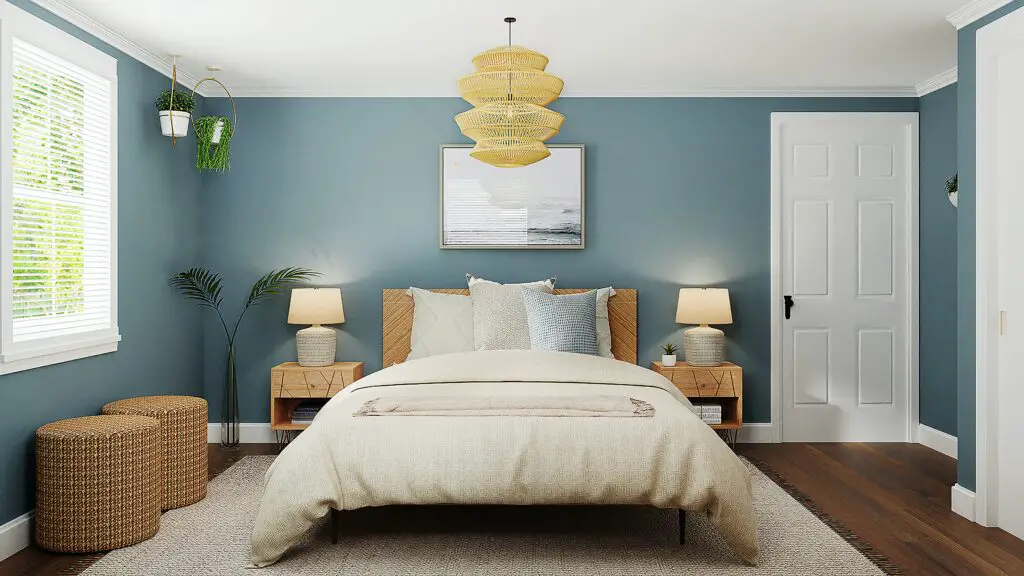
Conclusion
Choosing the right accent wall color can completely transform the look and feel of a room. It is a design element that can add depth, character, and visual interest to any space. By following a few simple guidelines and considering your personal style and preferences. You can easily pick the perfect accent wall color that will enhance the overall aesthetic of your room.
When selecting an accent wall color, it is important to consider the existing color scheme of the room. Look at the colors of your furniture, flooring, and other decorative elements. The accent wall color should complement and enhance these existing colors, rather than clash with them. For example, if your room has a neutral color palette, you can choose a bold and vibrant accent color to create a focal point. On the other hand, if your room already has a lot of colors, you may want to opt for a more subtle and understated accent wall color.
Another factor to consider when picking an accent wall color is the size and shape of the room. Darker colors tend to make a room feel smaller, while lighter colors can make a room appear more spacious. If you have a small room, you may want to choose a lighter accent wall color to create the illusion of a larger space. Conversely, if you have a large room, you can experiment with darker and bolder accent wall colors to add drama and coziness.
Lastly, it is essential to take your personal style and preferences into account when selecting an perfect accent wall color. Your accent wall should reflect your personality and create a space that you feel comfortable and happy in. Consider the mood and atmosphere you want to create in the room. If you want a calm and serene environment, you may opt for cool and soothing colors. If you want a vibrant and energetic space, you can choose warm and bold accent wall colors.
Picking the perfect accent wall color requires careful consideration of the existing color scheme, the size and shape of the room, and your personal style and preferences. By following these guidelines, you can create a visually appealing and harmonious space that reflects your unique taste. Remember, an accent wall color is not just a decorative element, but a powerful tool that can transform the entire look and feel of a room. So, take your time, experiment with different colors, and have fun creating a space that truly represents you.



